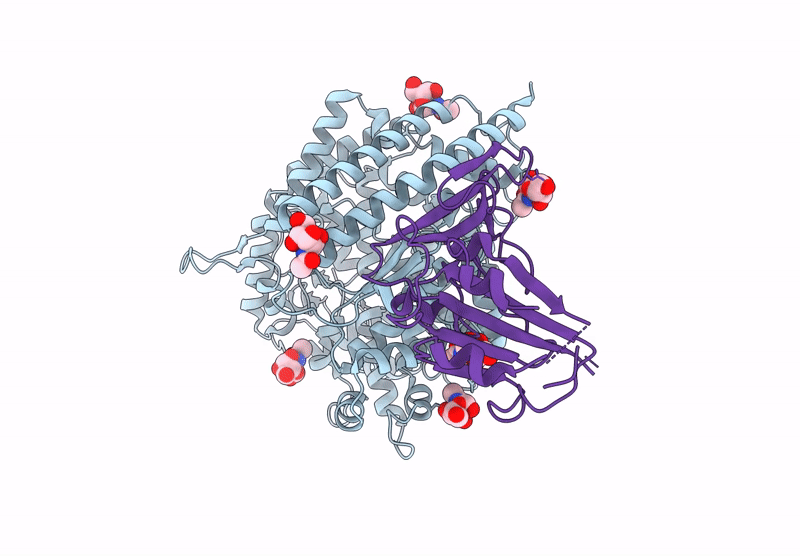
Deposition Date
2024-09-13
Release Date
2025-03-12
Last Version Date
2025-04-02
Entry Detail
PDB ID:
9JJ6
Keywords:
Title:
BtHKU5-CoV-2-441 Spike RBD domain binding to hACE2
Biological Source:
Source Organism:
Pipistrellus bat coronavirus HKU5 (Taxon ID: 694008)
Homo sapiens (Taxon ID: 9606)
Homo sapiens (Taxon ID: 9606)
Host Organism:
Method Details:
Experimental Method:
Resolution:
2.94 Å
Aggregation State:
PARTICLE
Reconstruction Method:
SINGLE PARTICLE


